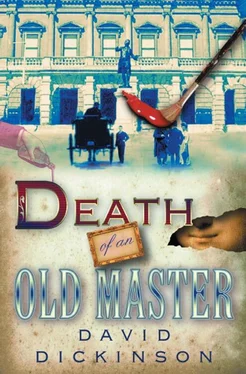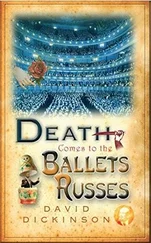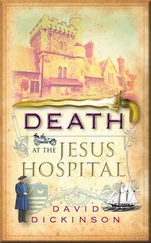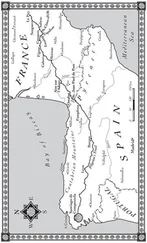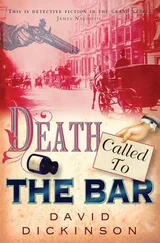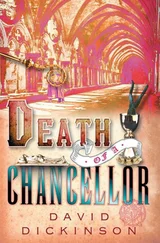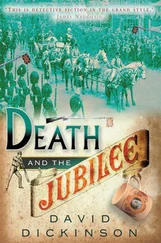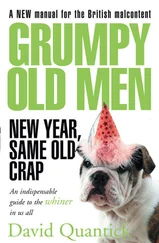David Dickinson - Death of an Old Master
Здесь есть возможность читать онлайн «David Dickinson - Death of an Old Master» весь текст электронной книги совершенно бесплатно (целиком полную версию без сокращений). В некоторых случаях можно слушать аудио, скачать через торрент в формате fb2 и присутствует краткое содержание. Жанр: Исторический детектив, на английском языке. Описание произведения, (предисловие) а так же отзывы посетителей доступны на портале библиотеки ЛибКат.
- Название:Death of an Old Master
- Автор:
- Жанр:
- Год:неизвестен
- ISBN:нет данных
- Рейтинг книги:4 / 5. Голосов: 1
-
Избранное:Добавить в избранное
- Отзывы:
-
Ваша оценка:
- 80
- 1
- 2
- 3
- 4
- 5
Death of an Old Master: краткое содержание, описание и аннотация
Предлагаем к чтению аннотацию, описание, краткое содержание или предисловие (зависит от того, что написал сам автор книги «Death of an Old Master»). Если вы не нашли необходимую информацию о книге — напишите в комментариях, мы постараемся отыскать её.
Death of an Old Master — читать онлайн бесплатно полную книгу (весь текст) целиком
Ниже представлен текст книги, разбитый по страницам. Система сохранения места последней прочитанной страницы, позволяет с удобством читать онлайн бесплатно книгу «Death of an Old Master», без необходимости каждый раз заново искать на чём Вы остановились. Поставьте закладку, и сможете в любой момент перейти на страницу, на которой закончили чтение.
Интервал:
Закладка:
It so happened that most of the houses de Courcy visited were in need of repair. New roofs, fresh plumbing, the urgent need for modern kitchens were all crying out for money that was not there.
Most of the Hammond-Burke pictures were in the Great Hall and the dining room. ‘I think it might be easier if you left me for a while,’ de Courcy said to his host. ‘I need to make notes.’ He pointed to a forbidding large black notebook in his left hand. Everywhere he went de Courcy made copious notes of all the paintings and sculpture in the houses. This was the cover story. He knew that he could quite soon produce, if he had to, the first volume of the proposed compendium. The real purpose of his visit was to see what might sell, what might fetch the highest prices.
He sat down at a small writing table and set to work. There were few houses he visited which did not lay claim to Titians and Van Dycks. Sure enough, there they were, on either side of the great fireplace. De Courcy inspected them carefully and shook his head. ‘Here we go again,’ he said to himself. By this stage of his new career Edmund de Courcy had acquired a very considerable knowledge of the works of the Old Masters. He had once boasted to William Alaric Piper that he could spot a fake Titian at fifty paces. Here were some more. Generations of English tourists on the Grand Tour had been fleeced by their hosts. The devious Venetians, the even more devious Romans had been quick to discover which Old Masters particularly appealed to their visitors. A few days or a few weeks later, copies or forgeries would mysteriously appear to be carried home in triumph to the broad fields of Hampshire and Surrey.
‘1,’ he wrote: ‘Isabella, wife of Emperor Charles V of Spain. 2: Christ on the Cross.’ Then he wrote ‘titian’ without the capital T to remind himself that the paintings were not genuine works by the master. He continued through a whole series devoted to ancestor worship which took him from Number 3 to Number 41 across four pages of his book. A cavalcade of previous Hammond-Burkes, sometimes simply Hammond, at other times simply Burke, stared down at him. There were Thomases and Sarahs, Alices and Williams, Henrys and Constances. Most of them looked pretty pleased with their lot, apart from one old woman, painted by an unknown hand, who was scowling at the painter as if she wished he would go away. The artists were various, a couple of Knellers that looked genuine, a couple of Gainsboroughs that looked doubtful.
But it was a painting to the left of the fireplace in the dining room that took his fancy. It was listed in his black catalogue as Number 75.
The Holy Family with Lamb , the inscription on the frame declared. Rafaello Sanzio, called Raphael. De Courcy peered at it carefully. In the top left-hand corner was one of those imaginary Renaissance cities on the edge of a lake, two small figures trudging towards it along a dusty road. In the bottom left-hand corner was the lamb with the infant Christ sitting astride it. Holding on to the child was a Madonna in deep blue with a red blouse. Above her stood an old man, leaning on a staff, peering with adoration at the sacrificial victims below. The painting was suffused with a pastoral devotion. The Madonna, de Courcy decided, was not one of those Florentine beauties to be found in the Uffizi or the Pitti Palace. This one looked as though she might have tilled the fields or milked the cows herself. But Raphael. Was it a Raphael? De Courcy stepped back to inspect the picture from a distance. He took a small eyeglass and looked closely at the brushwork. He contemplated the composition of The Holy Family with Lamb. He looked out of the window at the river rushing past the terrace, the deer grazing peacefully in their pasture.
Two thoughts were uppermost in Edmund de Courcy’s mind as he completed his entry in the black book. The first was that Raphael commanded very high prices. For some reason he always had. Murillos might drift in and out of fashion, Lawrences could come and go, but Raphael, along with Leonardo and Michelangelo, always sold for fabulous sums. Less than twenty years ago the Government had purchased Raphael’s Ansidei Madonna for the National Gallery for seventy-thousand pounds from the Duke of Marlborough. The second thought was that this house merited three stars in his private annotation of relative penury. The Hammond-Burkes were virtually bankrupt, if not worse.
He strolled back through the house to greet his host. Hammond-Burke was seated at a small table in a sitting room just off the Great Hall. Outside de Courcy could see the weeds bursting through the gravel, the untrimmed lawns, the broken windows still unrepaired. He remembered the many damp patches on the walls of the dining room. Hammond-Burke was looking disconsolately at a pile of papers in front of him. Reading one or two of them upside down de Courcy noticed that they were bills, probably unpaid, possibly final demands.
‘What a splendid collection of pictures you have here,’ he began with a flattering smile. ‘Easily one of the best I’ve seen.’
His host was not encouraged by the news. He continued staring at his bills.
‘Is there any chance,’ de Courcy went on brightly, ‘that you might want to add to your collection? Two Gainsboroughs are always an asset, four Gainsboroughs would be more than twice as good!’
James Hammond-Burke laughed. He went on laughing. The laugh turned hysterical. He picked up a couple of his bills and threw them defiantly in the air. ‘Add to the collection, did you say?’ His face had turned very red. ‘Add to it? That’s good. That’s very good.’ He paused and put his hand to his face. ‘That’s the best thing I’ve heard this year, oh yes, easily the best.’
He stopped as if he had said too much. The normal look of melancholy pain returned to his features. De Courcy waited. This was the crucial moment. In the early days he and William Alaric Piper had rehearsed the various ways these interviews about the compendium might develop. Piper had the ability to become an irascible if impoverished duke or a proud and haughty squire who would both be quick to anger if the wrong proposition was put to them. Englishmen after all are always loath to part with their possessions, however trying the circumstances. De Courcy thought that the Marlborough sale must have made it easier for them. If one of the foremost members of the aristocracy could sell the most valuable objects in his collection to pay his debts, then the smaller fish in the pond might feel easier about doing likewise. On more than one occasion in these rehearsals the Piper figure had thrown de Courcy out of the imaginary house for impudence and discourtesy.
Sometimes de Courcy waited before he mentioned the word ‘sell’. Then a letter would follow his visit, after a respectable ten days, informing the owners that if there was ever any wish on their part to dispose of any of their possessions the firm of de Courcy and Piper would, reluctantly of course, oblige. On other occasions he struck immediately. If de Courcy felt the lack of funds was quite obvious, that family pride was not in the ascendant, he would strike at once.
‘Well,’ de Courcy said, thinking that he was not going to be offered a cup of tea, ‘there is only one other thing I would say about your excellent collection.’ He paused. Hammond-Burke looked up at him with miserable eyes. Somewhere in the distance a clock struck four.
‘If – and I’m sure it’s highly unlikely – if, as I say, you ever wanted to sell, that Raphael would fetch a good price.’ De Courcy smiled a deprecating smile. ‘A very good price.’
Hammond-Burke’s reaction was the most unusual de Courcy had yet seen. Normally the owners protested that that was very interesting, but that they had no wish to sell. Only after some time had elapsed would a rather sad letter arrive at Old Bond Street inquiring about possible disposals. Even then they rarely mentioned money.
Читать дальшеИнтервал:
Закладка:
Похожие книги на «Death of an Old Master»
Представляем Вашему вниманию похожие книги на «Death of an Old Master» списком для выбора. Мы отобрали схожую по названию и смыслу литературу в надежде предоставить читателям больше вариантов отыскать новые, интересные, ещё непрочитанные произведения.
Обсуждение, отзывы о книге «Death of an Old Master» и просто собственные мнения читателей. Оставьте ваши комментарии, напишите, что Вы думаете о произведении, его смысле или главных героях. Укажите что конкретно понравилось, а что нет, и почему Вы так считаете.
